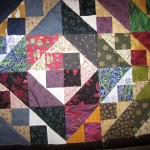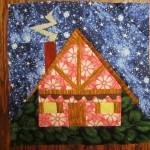I have been asked to make a blog post about the fabric masks for PPE. There has been no small amount of controversy over these masks.
I have been an ICU nurse (recently retired to run my business) for 30+ years. I have worked in situations where negative flow rooms are employed and N-95 masks needed. For lay people, this simply means that the patient is either suspected to be highly infectious or is highly contagious. Add to this I spent a year working in pediatric bone marrow transplant, so I know a few things about technique. These patients were greatly immunocompromised.
Recently with the COVID-19 outbreak there has been a shortage of PPE (personal protective equipment). My husband is a physician so he is on the front lines as he is Family Practice. Needless to say I am very worried about him. My daughter is a Medical Student, and before this had spent several years in a research lab. We all understand the importance of thorough research that is scholarly and peer reviewed. It’s not enough to say “common sense tells you….” because in science, to have the best possible outcomes to keep people safe, there is no room for common sense. You might think that it makes good sense to do something only to find out that it has absolutely no scientific merit once it has gone through the rigors of scientific research. So, what does all of this have to do with the masks that people are sewing? A great deal.
N-95 masks are NOT TO BE USED by the general public. They are created for use for HCP inside certain situation. They are designed to have a close fit and to filter down to .3 microns, thereby protecting against bacteria and viruses. They do not guarantee that you will not become infected. There is no guarantee on this.
Regular face masks are not occlusive and are designed to prevent against liquid contamination (sneezes, respiratory secretions) from coming into contact with your face. They are not occlusive.
Now, we are getting to the point of the homemade devices. Here is what the CDC says about home made devices. We have reached the level of Crisis Capacity which does not meet the US standards of care. But what they say is that these measures need to be considered in crisis situations.
HCP use of homemade masks:
In settings where facemasks are not available, HCP might use homemade masks (e.g., bandana, scarf) for care of patients with COVID-19 as a last resort. However, homemade masks are not considered PPE, since their capability to protect HCP is unknown. Caution should be exercised when considering this option. Homemade masks should ideally be used in combination with a face shield that covers the entire front (that extends to the chin or below) and sides of the face.
My mask that I have designed is meant to cover tightly below the chin. There are 3 layers of fabric. It is the size of the innoculum as well as the actual innoculum that determines how sick you get. This will keep you from having wet secretions near your mouth and nose. It will slow transmission of the virus as it won’t immediately get to your mouth and nose. For this reason, it is not optimal but still helpful to have the homemade PPE. These are not recommended for healthcare providers taking care of our sickest patients, but for the general public they are helpful. Here is a link to the pattern and to the video describing how to make them. https://www.etsy.com/listing/774446468/pattern-for-fabric-ppe-mask?ref=shop_home_active_1&crt=1
I hope this clears up questions that people have.

